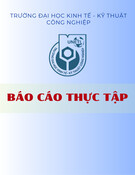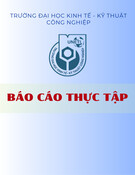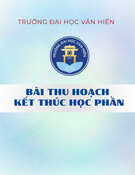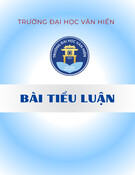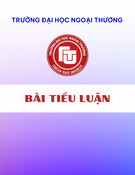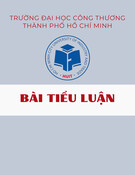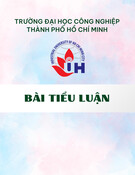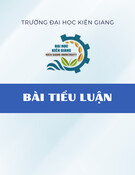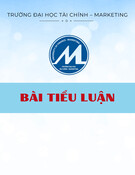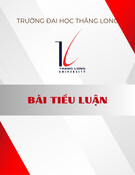
University of Arkansas, Fayetteville
ScholarWorks@UARK
Accounting Undergraduate Honors Theses Accounting
5-2019
To Tweet or Not toTweet: That Is the Professional
Social Media Question
John Bauer
Follow this and additional works at: https://scholarworks.uark.edu/acctuht
Part of the Accounting Commons, and the Business Administration, Management, and
Operations Commons
This Thesis is brought to you for free and open access by the Accounting at ScholarWorks@UARK. It has been accepted for inclusion in Accounting
Undergraduate Honors Theses by an authorized administrator of ScholarWorks@UARK. For more information, please contact ccmiddle@uark.edu.
Recommended Citation
Bauer, John, "To Tweet or Not toTweet: That Is the Professional Social Media Question" (2019). Accounting Undergraduate Honors
Theses. 38.
https://scholarworks.uark.edu/acctuht/38

1
To Tweet or Not to Tweet: That Is the Professional Social Media Question
By
John C. Bauer
Advisor: Dr. Julie Trivitt
An Honors Thesis in partial fulfillment of the requirements for the degree Bachelor of
Science in Business Administration in Accounting
Sam M. Walton College of Business
University of Arkansas
Fayetteville, Arkansas
May 11, 2019

2
Abstract
As university and corporate programs continue to encourage their professional faculty to
post on social media as a means of spreading positive publicity, the consequences that follow
social media by employees must also be inspected. This study focuses on appraising the opinion
of professionals in regards to social media posts and the perceived responsibility for maintaining
ethical content while posting on the web. To do this, a survey was distributed and the resulting
data collected. The data shed light on the climate surrounding social media use and workplace
expectations for it, as well as the degree of responsibility assumed by both employee and
employer. In this paper, I use the survey results to draw conclusions which will assist employer
organizations in developing and sustaining beneficial social media conduct policies, which
promote productivity and inclusiveness within the work environment.

3
I. Introduction
It’s getting dark, you’re home alone, and for some inexplicable reason, you decide to turn on a
horror film. At some point during the film, there will be a moment where the protagonist opens
the door to a basement, cellar, attic, closet, or some other seemingly sinister room. As you watch,
an eerie feeling creeps into your stomach. You know something will inevitably jump out from
the exact spot that the character decides to look. You unfailingly ask yourself why he or she
would walk directly into a trap.
In a similar sense, you have read articles or viewed headlines covering instances where
employees have been discharged from work for their posts on social media. When you see the
story, you ask yourself the same question as you did while watching the scary movie, “Why
would you walk right into a trap?”
However, there is an essential difference separating the two scenarios. With the
employee, he or she did not have the eerie feeling smoldering in their stomach beforehand. They
did not think that their private social media accounts could be viewed and further used as a
weapon against them. It may seem foolish to some, but to others, the consequences never crossed
their mind. Take, for example, the case of Kristopher Brooks [6]. Kristopher was a young
reporter out of New York University’s graduate journalism program. He acquired an exciting job
offer from an outlet called the News Journal out of Wilmington, Delaware. Ecstatic with his
offer, Brooks posted his acceptance on social media, as many others would do in this day and
age [6]. To his shock and utter dismay, he received a phone call a few hours later from the News
Journal recruiter rescinding his offer. His post had taken the form of a press release, as Brooks
had used the company logo in his post, and the news outlet decided it to be a reasonable means
for his termination [6]. Despite offering to delete the post, the company stayed their decision and
left Brooks baffled and jobless [6].
This incident, revealed a divide in the beliefs about social media by age groups. Many
older generations supported News Journal, understanding that Brooks had effectively tethered
his every action on social media to the journal through his so-called press release [6]. Individuals
of the younger generations entering the workforce at the time were more unsettled by Brooks’
release because his post was positive and excited, not negative in any way. Kristopher Brooks’
unfortunate situation, if nothing else, manifested the obvious differences in opinion between
older and younger social media users.
A more recent issue, however, surfaced in the news in February of 2019. Steven Salaita, a
former academic, accepted a follow up interview with The Chronicle of Higher Education after
his tenured faculty appointment to the University of Illinois at Urbana-Champaign was
withdrawn in 2014 [4]. In the fall of that year, Salaita Tweeted about the Israeli-Palestinian
conflict. His posts resulted in the dismissal of his tenured position with the University [4]. Now,
Salaita drives a school bus in the Washington, D.C. area. His termination from Illinois red-
flagged him for other universities, and he was forced to turn away from academia in order to
provide for himself and his family [4].
Social media controversies have and will continue to be a cause for concern for human
resource departments. For that reason, research into the opinions of professionals of today could
provide insight as to how to deal with social media issues. This thesis contributes to the basis of
knowledge on opinions of social media usage and its place in modern society. Social media and
inter-work relationships affect a work environment and culture, making it a pressing matter today
for companies to formulate a formal social media policy. An effective policy promotes a

4
positive, encouraging environment, which in turn fosters productivity and focus. On the contrary,
an underdeveloped or nonexistent social media policy can add work environment anxiety and
tension.
With that in mind, it is important for employers to understand the relationship between
social media and comfort within a work environment. Ensuring the comfort of the employees
within an organization is a positive in today’s age where work-life balance is a desire within the
young workforce. For that reason, I conducted research to quantify the climate surrounding
social media in the workplace. I surveyed individuals currently in the workplace or who were in
it at one point. Our results provide insight into the opinions of workers on how employers may
wish to proactively modify their social media policies and systems.
This study attempts to look at the freedom with which people believe they can express
their views electronically. The pressing question is: is it the responsibility of the organization to
protect the well being of an employed individual and his views, beliefs, and values, or is it all the
responsibility of the individual to abstain from any actions that would bring about any form of
workplace repercussions?
II. Historical Context Behind Our Current Framework
To understand the current climate regarding social media use in the workplace, one must
trace the recent progression of social media. Before beginning the study, I first define social
media so as to form boundaries of the scope of our research. According to ESCP-Europe
Professor Andreas Kaplan, Social media is defined as, “A group of Internet-based applications
that build on the ideological and technological foundations of Web 2.0 [a platform whereby
content and applications are no longer created and published by individuals, but instead are
continuously modified by all users in a participatory and collaborative fashion], and that allow
the creation and exchange of User Generated Content [1].” When broken down, this definition of
social media is more simply understood as a group of applications that exploit the technological
platforms created on the Internet to be utilized for the sharing of any content designed by a user.
A broad summation is used to allow for the depth and variation between different social media:
take for example YouTube, Facebook, and Twitter, three extremely distinct media platforms. All
three of these are generally considered social media despite their differences.
Acknowledging social media’s definition, I can now unpack the timeline following its
inception. It has been around since the late 1990’s; however, it did not achieve the popularity that
it now holds until later. Around 2010, various social media networks had enough users to incite a
response from human resources in company conduct codes and from government institutions to
keep labor standards up to date in regards to employee social media use. Initial standards at that
time pale in comparison to the regulations of today. Policy has come a long way since 2010,
largely due to documented incidences that arose over the next five years. The research dug into
analysis of employees’ and employers’ perspectives on boundaries between professional and
personal identities on social media. Precious research also defines essential key terms to propel
further investigation and clarify previously ambiguous explanations.
As social media transitioned from uncommon in practice to ubiquitous in all walks of
life, controversies over employee conduct outside of company time arose. Social media allows
individuals to share with their friends and relatives, as well as their superiors following their
accounts. These controversies led to the creation of the term network privacy, which, defined by
the American Business Journal, is privacy within information’s intended network and context
[5]. The two key components of network privacy are the intended network and intended context.

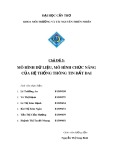
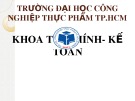
![Yêu cầu đạo đức nghề nghiệp của nhà môi giới: Đề tài [Nghiên cứu/Phân tích]](https://cdn.tailieu.vn/images/document/thumbnail/2015/20150418/quangvinh66688/135x160/1752180_366.jpg)

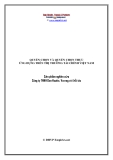
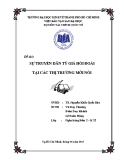
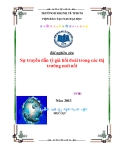

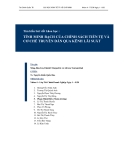
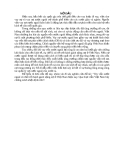
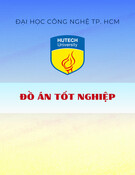
![Thẩm định dự án đầu tư Ngân hàng BIDV: Bài tiểu luận [chuẩn nhất]](https://cdn.tailieu.vn/images/document/thumbnail/2025/20251018/kimphuong1001/135x160/7231760775689.jpg)
